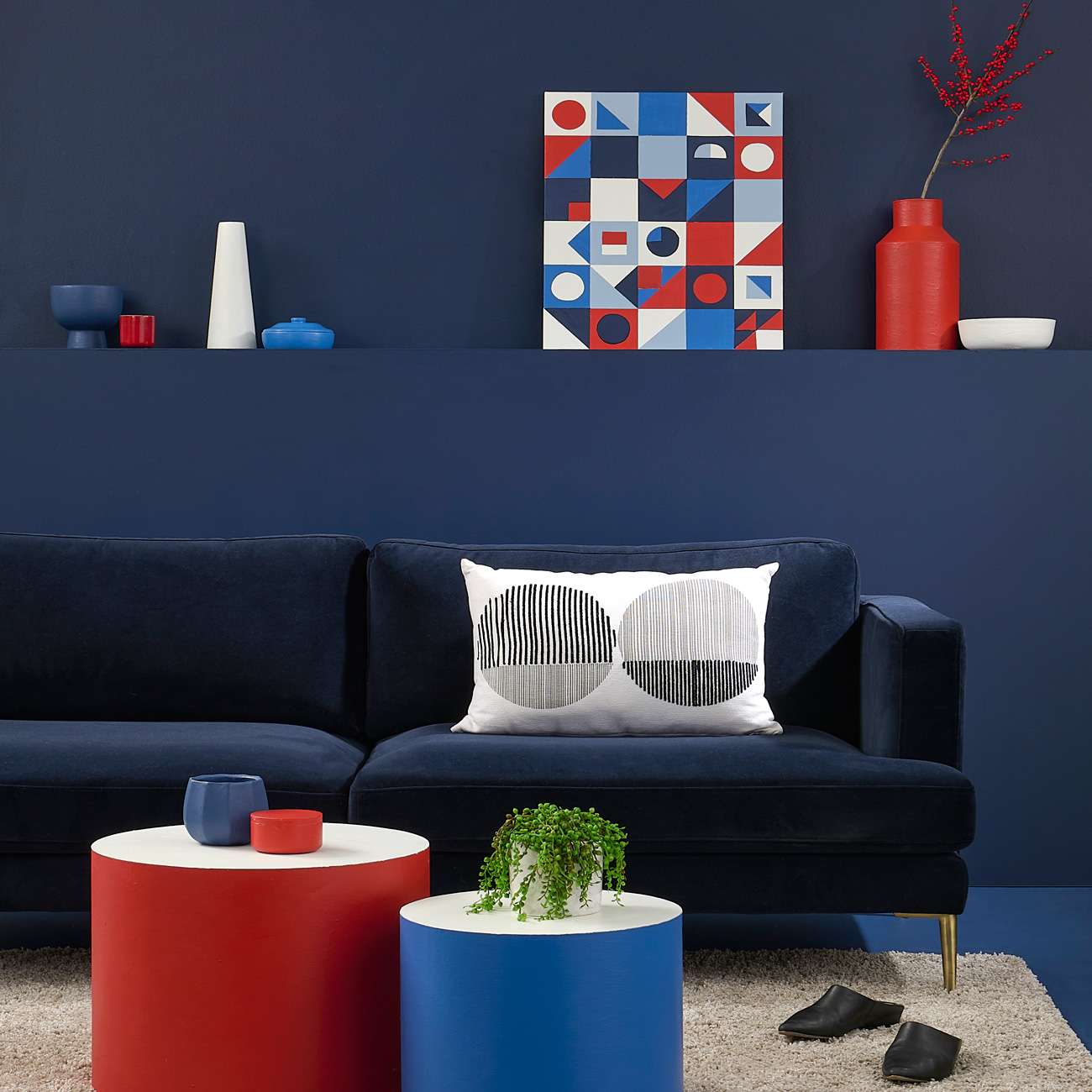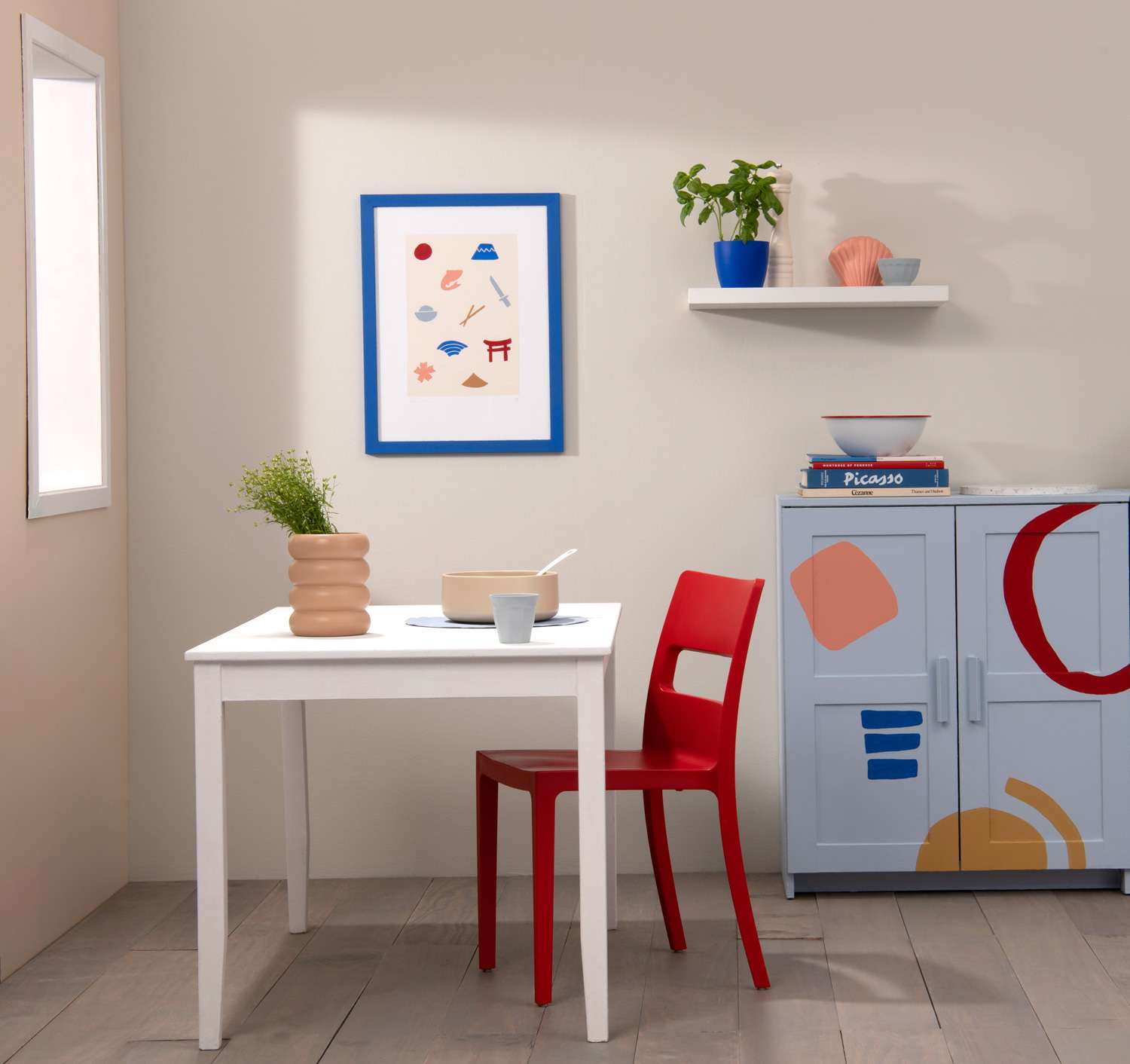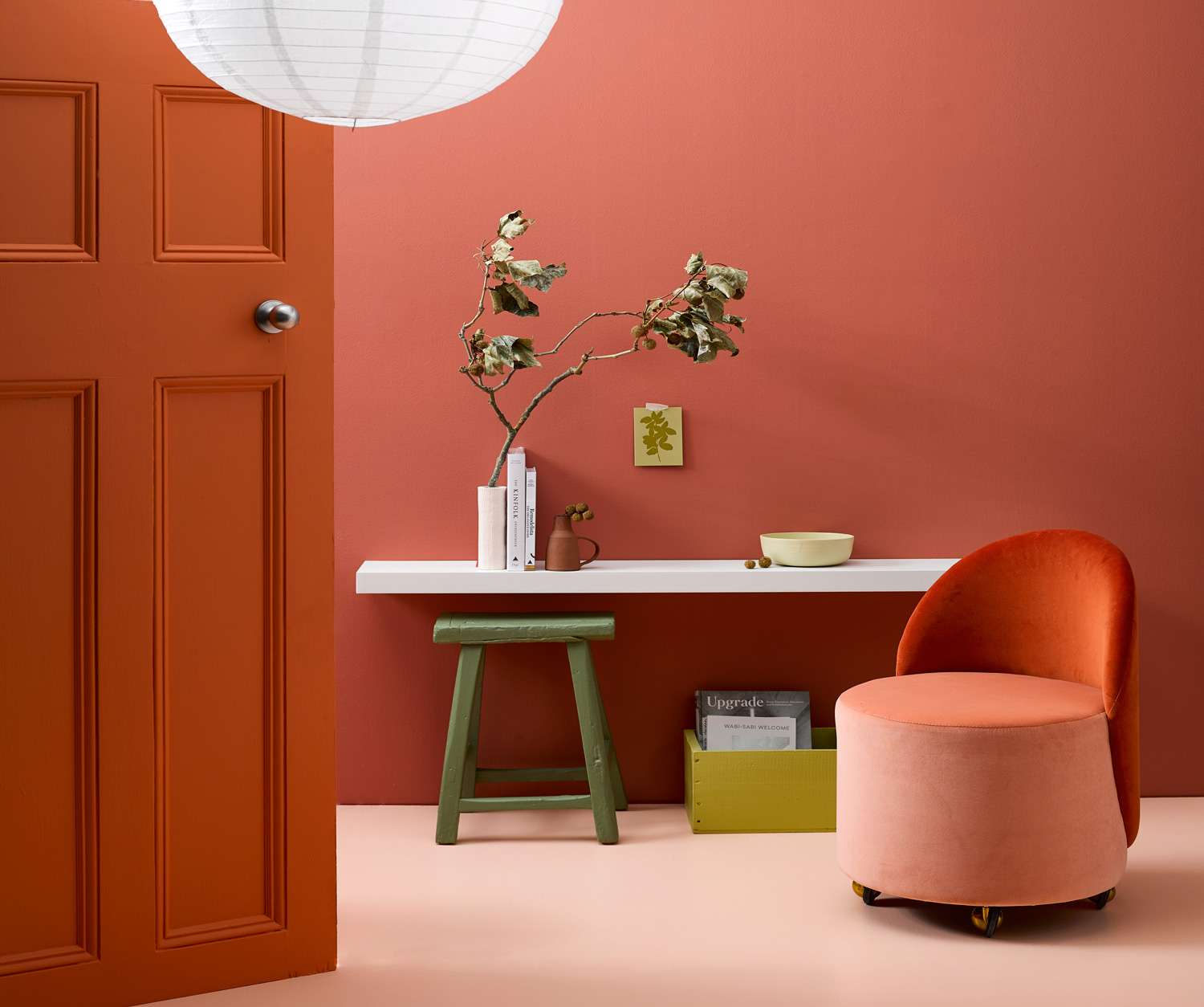When it comes to determining whether a room feels cosy or expansive, the size of the space isn’t everything. If you harness a little colour theory, you’ll expand your possibilities beyond mere measurements.
There’s a good reason that whites of varying shades dominate Resene’s top best sellers. It is widely known that light colours will help to create a feeling of expansion because they reflect light and that darker shades will tend to reduce the feel of space because they absorb it.
However, this is only part of the story and some colours will surprise by having the opposite effect. This is because it’s not only the depth of colour that’s important, it’s also whether the colour is ‘warm’ or ‘cool’. Cool colours, such as green, blue and grey, recede away from the eye, which can have the effect of pushing walls back and expanding a space. Warm colours – such as yellow, red, violet and terracotta, advance – draw the eye in, making the walls feel closer for a cosy feel. In fact, even darker shades can create space.
Consider the undertone
Start your property search
While white is an easy and versatile base, if the colour is too pure, the way that light interacts with it can be static. There is little subtlety in its hue, so it reflects all of its colour at once. Off-whites and other pale neutrals are actually a better choice because each hint, or undertone, of another colour can create different levels of reflection and change it from a cool colour to a warm one. For a change from white and with the same expanding benefits, try soft greys such as Resene Athens or a light blue like Resene Solitude.
Warm paint colours have yellow, beige or pink undertones. Cool paint colours have green, purple or blue undertones. With deeper colours such as emerald and indigo, these undertones can become even more influential. The dynamic colour of a dark shade adds interest – as the light changes throughout the day, so does the colour. Even black can have either cool or warm undertones.
Embracing the dark
Darker shades are often favoured when space is either at a premium or an intimate feel is required. For a cosy feel, choose a warm colour such as a deep red like Resene Smashing or the rich brown of Resene Diesel. However, dark colours can also create the illusion of a more expansive space. Although they reflect less light, the depth of colour and shadows and the fact that the colour changes with the light blurs the edges of the room, taking away the definition of the space. Stick to a cool colour but try a deeper shade, such as Resene Coast.

Navy blue is a versatile colour offering a cosy indulgent vibe while at the same time not closing in a space too much. Just make sure the room receives some natural light. This deep navy allows other colours to pop forward. Wall and shelf in Resene Midnight Express. Floor in Resene True Blue. Rectangular coffee tabletop in Resene Midnight Express. Console tabletop in Resene Midnight Express. Vases, bowls and dishes (from darkest to lightest); Resene Blackjack, Resene Midnight Express, Resene True Blue, Resene Red Red Red, Resene Kashmir Blue, Resene St Tropez, Resene Smokescreen, Resene Breathless and Resene Bianca. Drum coffee tables in Resene Red Red Red (large) and Resene St Tropaz (small) with tops in Resene Bianca. The DIY artwork was created with testpots of Resene Midnight Express, Resene Red Red Red, Resene St Tropaz, Resene Bianca and Resene Breathless. Project by Laura Lynn Johnston. Image by Bryce Carleton.
The effect of light
It’s important to take into account how much natural light a room receives when considering colour. In a south-facing room that doesn’t receive much light, a dark colour can close a room in. But the same colour in a north-facing aspect will behave very differently and the play of light and shadow can highlight the undertones of the colour, reflect light and blur the edges of the room, making it appear bigger.
The right finish
A glossy paint, such as Resene Enamacryl gloss, will reflect more light than a flat or low sheen finish – so, while a deep colour might create a cosy and intimate feel in small rooms, using a gloss can help maximise ‘cosy’ and minimise ‘small’. In high traffic areas such as bathrooms, hallways and kitchen, a semi-gloss like Resene Lustacryl is also easier to clean. Reserve a high enamel gloss like Resene Enamacryl for woodwork such as windowsills and trims. The more reflective the paint, the more likely it is to show up imperfections. For most decorators low sheen, such as Resene SpaceCote Low Sheen, is ideal for all wall areas as it provides a low sheen finish with the durability of an enamel, which can even be used in ‘wet’ areas such as a kitchen, bathroom or laundry.

Two complementing neutrals are used in the dining area of a kitchen with Resene Triple Merino, a cool off-white with a hint of green, on the larger wallcreating an illusion of space and offering an ideal backdrop to bolder fun colours including the chair in the bright red of Resene Smashing. The left wall, with a window that floods morning sun into the space, is used as an accent in creamy Resene Anglaise. Window architrave in Resene Triple Merino. Timber floor finished in Resene Colorwood Mid Greywash. Table in Resene Half Sea Fog. Chair in Resene Smashing. Cabinet in Resene Spindle with painted shapes in Resene New York Pink, Resene Twine, Resene Smashing and Resene Half Resolution Blue. Project by Kate Alexander. Image by Bryce Carleton.
Consider the ceiling
There are times when lowering the height of the ceiling can make the space more pleasant and provide a welcoming feeling. Painting it in a quarter or half strength of your wall colour. In other situations, a low ceiling might bring a claustrophobic feel to the space. Painting the walls in a darker colour and leaving the ceiling white can achieve the illusion of a higher ceiling. Use a flat non-reflective finish for ceilings such as Resene Ceiling Paint or Resene SpaceCote Flat.
If you have a high stud and very decorative ceilings, such as in many older homes, consider using a deep rich colour, such as Resene Pohutukawa, to draw the eye up.
Playing with dimensions
If you have areas with unbalanced proportions, there are ways to even out the look and feel of the spaces. Accent walls are a popular choice when we want to be daring with a bolder use of colour without using it on all the walls. For example, you could use a pale neutral with blue/green undertones as your main colour and then paint a fireplace or the wall behind a bed in a deep jewel colour such as Resene Yowsa, a deep teal.

Resene Apple Blossom, a rose-tinged terracotta and the door in Resene Sebedee offer a very warm welcome in this generous entranceway. The warmth and receding nature of the wall is tempered by the off-white shelf in Resene Quarter Tea and painted floor in Resene Wax Flower. The bowl is in Resene Yuma, stool in Resene Woodland, crate in Resene Gingko, thin vase in Resene Just Right and tealight holder in Resene Pale Oyster. Project by Gem Adams. Image by Wendy Fenwick.
An accent wall creates an optical illusion, drawing the eye to a single focal point. This illusion can then be varied by extending your darker colour to two walls and even the ceiling. When dealing with multiple walls in a darker shade, you might prefer a more subtle effect such as pairing Quarter Merino with Resene Merino.
When the dimensions of a room are overly narrow for their function, such as a tight hallway, long living room or galley kitchen, think about painting the back wall and the ceiling with the same darker colour and painting the side walls in a lighter reflective colour. This trick will make the space appear wider and more spacious. To make a space appear narrower, you can reverse this by painting the side walls in a darker shade than the back walls and ceiling.
A good way to decide on colours and finishes for your projects is to see what others have done. Check out a huge range of projects from Kiwi decorators online at www.habitatbyresene.co.nz. Use the room and colour filter tools to view specific rooms types and colours. Create a page of looks you love and looks you don’t. This will help you narrow down the styles you are drawn to. Take this with you when you are choosing your finishes and your accessories – not only will it help you to keep on track with things that fit the styles you love but it will also help staff in store understand the look you are going for so they can make recommendations to you.
If you need extra help with colours, try the free Resene Ask a Colour Expert service, resene.co.nz/colourexpert, or book in a Resene Colour Consultation, resene.co.nz/colourconsult.











